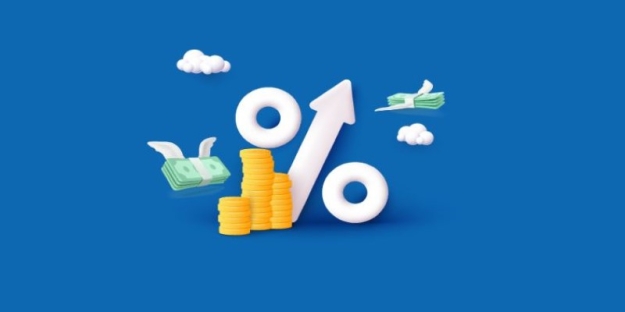Should You Choose Fixed Or Floating Interest
Thinking of taking a loan or a mortgage? One of the first questions you’ll face is this: fixed interest or floating interest?
Both options have their own set of perks and pitfalls. The choice can shape how much you end up paying and how predictable your repayments will be. So, which one should you go for? Let’s break it down, side by side, so you can make the decision that works best for your situation.
What Is Fixed Interest?
Fixed interest means your rate stays the same for the agreed period. Your repayment amount doesn’t change during this time, regardless of what happens in the broader market.
How does it work?
You lock in an interest rate at the start. This could be for the entire loan term or a set number of years. For example, if you take a home loan at 7% fixed interest for five years, that rate won't change during those years.
Advantages Of Fixed Interest
Predictable Repayments: You know exactly what you owe each month.
Protection From Rate Hikes: Even if market rates rise, your interest rate stays untouched.
Easy Budgeting: No surprises in your monthly outgoings.
Drawbacks Of Fixed Interest
Missed Savings If Rates Fall: If market rates drop, you won’t benefit.
Possible Higher Starting Rate: Fixed rates often start higher than floating rates.
Breakage Fees: Switching or repaying early can attract penalties.
Example Scenario
A family takes a five-year fixed-rate loan at 7%. During those years, the market rate jumped to 8.5%. Their fixed rate shields them from the increase, saving them money.
What Is Floating Interest?

Floating interest (or variable interest) changes based on market conditions. Your repayments can rise or fall during the loan term.
How does it work?
The rate is linked to a benchmark, such as the repo rate or a bank’s prime lending rate. When the benchmark changes, your rate changes too.
Advantages Of Floating Interest
Potential Savings If Rates Drop: Your repayments decrease when rates go down.
Usually Lower Initial Rates: Floating rates often start lower than fixed rates.
Flexible Terms: Often, fewer penalties for prepayment or switching.
Drawbacks Of Floating Interest
Uncertain Repayments: Your monthly outgoings can fluctuate.
Risk of Higher Costs: If rates rise sharply, so do your payments.
Budgeting Challenges: Harder to plan long-term expenses.
Example Scenario
A freelancer opts for a floating rate of 6.5%. Over the next two years, rates fall to 6%. This drop reduces their monthly payments, freeing up cash for other goals.
Who Should Choose Fixed Interest?
Fixed interest suits those who prefer certainty and stability.
Best For:
People with fixed monthly incomes who value consistent budgeting.
Those expecting interest rates to rise shortly.
Borrowers with long-term commitments and limited flexibility in expenses.
Example
A couple with young children, a single income, and high monthly expenses chooses a fixed rate. They want to avoid sudden jumps in repayments that could strain their budget.
Who Should Choose Floating Interest?
Floating interest is better for borrowers willing to take on some risk for the chance of paying less.
Best For:
People who expect interest rates to fall.
Those with flexible budgets can handle changing repayments.
Borrowers who may repay their loan early and want to avoid high prepayment penalties.
Example
A young professional with a growing salary opts for a floating interest rate. If repayments rise, they can handle the increase. If rates drop, they enjoy the savings.
Factors To Consider Before Choosing
Before you lock in your decision, look at these key points:
Market Trends:
Check where interest rates are headed. Are central banks hinting at rate cuts or hikes? A good sense of the economic climate can help you make informed decisions.
Loan Tenure:
Short-term loans often work better with floating rates, while long-term loans can benefit from fixed rates, especially if you expect steady or rising interest rates over the years.
Income Stability:
If your income is steady and predictable, fixed rates make sense. If it’s variable or likely to increase, floating rates could suit you and give you the chance to save when rates drop.
Risk Tolerance:
Are you comfortable with uncertainty? Floating rates can bring savings, but also surprise costs. Think about whether sudden changes in monthly payments could disrupt your financial plans.
Penalty Clauses:

Look closely at prepayment penalties or switch fees. Fixed rates often have higher charges, so it’s worth reading the fine print before signing.
Example:
Two friends take identical loans—one fixed, one floating. Rates rise for three years, hurting the floating-rate friend. But in year four, rates fall sharply, and the floating-rate borrower finally pays less overall.
Combining Fixed And Floating
Some lenders offer a hybrid loan—part fixed, part floating.
How does it work?
A portion of your loan stays at a fixed rate, while the rest moves with the market.
Pros Of Hybrid Loans
Reduces the risk of large payment jumps.
Let's you benefit partially from falling rates.
Cons Of Hybrid Loans
More complex to understand.
May not deliver the lowest cost compared to pure fixed or floating.
Example
Someone takes a hybrid home loan—half at 7% fixed, half at a floating rate. When rates rise, the fixed portion protects them. If rates fall, the floating portion gives some savings.
Tips For Getting The Best Deal
Compare rates from multiple lenders.
Negotiate—banks sometimes lower rates for good credit profiles.
Watch the fine print on switching between fixed and floating.
Consider the total cost, not just the rate—fees can add up.
Example
A borrower finds a floating rate of 6.4% from one bank and 6.5% from another. But the 6.4% option has high processing fees. Over the loan term, the slightly higher rate with lower fees costs less overall.
Deciding What’s Right For You
Choosing between fixed and floating interest is not just about numbers—it’s about your comfort with risk, your financial goals, and your loan term. If stability is your top priority, fixed rates give you peace of mind. If you're open to fluctuation for possible savings, floating might be your match. And if you're torn, a hybrid loan could offer a middle ground.